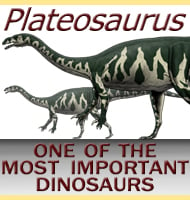In Depth
Fossils of Eonatator were originally assigned to the genus Clidastes and then later still to the genus Halisaurus. Eventually Eonatator was established as a distinct genus in 2005 and today is regarded as a halisaurine mosasaur. Eonatator was relatively small when compared to other mosasaurs, but the simple fact fossils for Eonatator range from Columbia, the United States of America all the way across the Atlantic to Sweden is a clear indicator that Eonatator was highly successful. Because of the small size, Eonatator was probably a specialist hunter of fish, though may have also attacked small marine reptiles.
Further Reading
- A new species of Halisaurus from the Late Cretaceous phosphates of Morocco, and the phylogenetical relationships of the Halisaurinae (Squamata: Mosasauridae). - Zoological Journal of the Linnean Society 143:447-472. - N. Bardet, X. Pereda Suberbiola, M. Iarochene, B. Bouya & M. Amaghaz - 2005. - Eonatator coellensis nov. sp. (Squamata: Mosasauridae), a new species from the Upper Cretaceous of Colombia. - Revista de la Academia Colombiana de Ciencias 37(145):499-518. - M. E. P�ramo-Fonseca - 2013.










